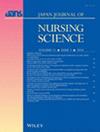Investigation of the possibility of using an augmented reality-based endotracheal aspiration simulation tool for nursing education
Abstract
Aim
We developed an augmented reality technology-based endotracheal aspiration simulation tool (the AR tool) consisting of three modes: a mode for nursing students to learn endotracheal aspiration by themselves (learning mode); a mode for repeated practice (practice mode); and a mode for confirmation testing (test mode). This study aimed to compare the learning outcomes of the AR tool with traditional training mannequins and identify potential uses and improvements of the AR tool.
Methods
We invited students, and faculty members from the three universities who agreed to cooperate in conducting this study. Fifty-four students and nine faculty members agreed to participate in this study. The students were divided into two groups. One group was to study with the AR tool and the other group was to study with the traditional half-body training mannequin for suction. The students in both groups were asked to demonstrate endotracheal aspiration on another full-body type training mannequin which could be used as a patient with a tracheostomy (Skill test). Group interviews with faculty members focused on the topic of the AR tool's potential use in nursing education and improvement needed.
Results
There was little significant difference in the skill test results of endotracheal aspiration of students in both groups. The students and faculty members both expressed an interest in the AR tool. They said it was suitable for self-study of endotracheal aspiration.
Conclusions
This AR tool is an effective teaching tool for learning the sequence of endotracheal suctioning, although there are some areas that need improvement.


 求助内容:
求助内容: 应助结果提醒方式:
应助结果提醒方式:


